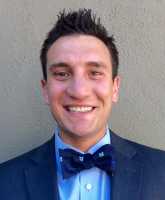Author Interviews, Brain Injury, Genetic Research / 09.03.2016
Genetic Variation Affects Recovery From Concussion
MedicalResearch.com Interview with:
Dr. Jane McDevitt
Temple University in Philadelphia
MedicalResearch.com: What is the background for this study?
Dr. McDevitt: During a head impact there is a mechanical load that causes acceleration and deceleration forces on the brain within the cranium. The acceleration and deceleration causes stress to the neurons and initiates a neurometabolic cascade, where excitatory neurotransmitters such as glutamate are released and depolarize the cell. This triggers protein channels to open and allow ions into and out of the cell. Increases in calcium persist longer and have greater magnitude of imbalance than any other ionic disturbance. One channel responsible for allowing calcium into the cell is r-type voltage-gated calcium channel. One of the main proteins within this voltage-gated calcium channel is the CACNA1E protein produced by the CACNA1E gene. This protein forms the external pore and contains a pair of glutamate residues that are required for calcium selectivity. It is also responsible for modulating neuronal firing patterns. A variation within this gene (i.e,CACNA1E ) that regulates expression levels of CACNA1E could be associated with how an athlete recovers following a concussion injury.
Upwards of 20% of the concussed population fall into the prolonged recovery category, which puts these athletes at risk for returning to play quicker than they should. Variation in recovery depends on extrinsic factors like magnitude of impact, and sport, or intrinsic factors like age or sex. One intrinsic factor that has not been definitively parsed out is genetic variation. Recovery is likely to be influenced by genetics because genes determine the structure and function of proteins involved in the cell’s resistance and response to mechanical stress. Due to CACNA1E’s relationship to calcium influx regulation, a single nucleotide polymorphism (SNP) could modify the expression level of the protein responsible for regulating calcium. Altered protein levels could lead to athlete’s responding to concussive injuries differently. The main objective of this study was to examine the association between CACNA1E SNPs with concussion recovery in athletes.
(more…)





















